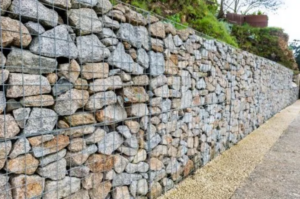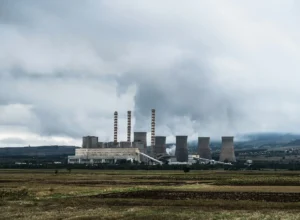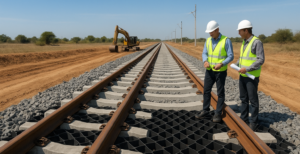The Ultimate Guide to Understanding Geotextiles
What is Geotextile? An Overview:
Geosynthetics are an indispensable part of civil engineering today. Geotextiles are robust geosynthetics and a modern tool with immense versatility. They outperform various traditional engineering solutions. Geotextiles offer reliable and predictable performance and are also easy to install.
By definition, geotextiles are permeable or porous fabrics made of polyester or polypropylene. By nature, they have tiny pores and hence allow for the flow of gases or liquids. Geotextiles can withstand extreme conditions and have excellent durability.
Overall, geotextiles are the most extensively used tools in civil engineering owing to being robust, low-maintenance, easy to install, highly resistant, and durable to weather conditions.
Table of Contents
Types of Geotextiles:
Depending on the application, geotextiles comprise natural or synthetic fibers. The natural geotextiles are either of jute and coir. The synthetic geotextiles use polyamide (PA), polyesters (PSF), polyethylene (PE), or polypropylene (PP). The polyethylene geotextiles are further classified as low density (LDPE), linear low-density (LLDPE), and the more common high-density polyethylene (HDPE).
Difference between woven and nonwoven Geotextiles:
Geotextiles are basically either woven or nonwoven. The woven geotextiles are knitted-like fabrics. They are manufactured by the weaving of individual threads, monofilaments, or fibrillated yarns on a loom and produce a uniform, sturdy and robust end product.
The nonwoven geotextiles, however, are manufactured by bonding materials either with chemical heat or needle punching.
|
WOVEN GEOTEXTILES |
NON-WOVEN GEOTEXTILES |
| They are knit-like fabrics constructed from interlaced loops of yarn, monofilaments, or other materials on a loom. | They are made interlocked synthetic fibers and typically manufactured either with chemical, thermal, or mechanical techniques, mostly needle punching. |
| They are semi-permeable and hence have a lower flow-through rate. | They are relatively permeable with a higher drain through and flow-through rate. |
| They have high tensile strength and high load capacity but lower elongation. | They break down faster than the woven geotextiles but have a higher elongation. |
| Woven geotextiles are excellent for applications of stabilization and reinforcement. | Nonwoven geotextiles are great for applications of drainage, separation, and filtration. |
Functions and applications of Geotextiles:
Geotextiles are eco-friendly and find various applications in roadways, parking lots, construction sites, railways, harbors, drain works, breakwaters, hillside erosion control applications, etc.
The functionality of geotextiles lies in their abilities of separation, stabilization, filtration, reinforcement, as a moisture barrier or waterproofing, and drainage.
- Separation: The geotextile performs the function of separation between two distinct layers of different materials.
Applications: Road sub-bases, railway ballast, breakwater, anti-seepage of waste at landfills, etc. - Stabilization: Here, the geotextile is laid on a compressible material, consolidating, and strengthening the bottom layer.
- Reinforcement: The geotextile here is placed within a weak layer to strengthen it rather than on top.
- Applications for stabilization and reinforcement include: Steep slopes, retaining walls, erosion control at lake/sea embankments, breakwater, land reclamation with hydraulic fill, and embankments with compressible soil. Also included are slope and roadbed reinforcement.
- Filtration: Here, the primary function of the geotextile is to allow water to pass through without allowing the accompanying materials acting as a filter.
Applications: Road drainage, basement drainage, and landfill drainage. - Moisture Barrier: For this application, rather than allowing water to flow through, it blocks water and other materials, with the aide of asphaltic emulsions making the geotextile impermeable.
Applications: Canal lining. - Drainage: The composite drainage geotextiles prevent clogging and extend the life and efficiency of drain pipes.
Applications: French drains, vertical drains, agricultural pipe drains, blanket drains in roads and sports fields, side drains, and wall drains.
At Ocean Global, we have geotextile solutions in a wide variety of grades and finishes, of the highest quality, to give you great flexibility in choosing a Geosynthetics products that suits your application. Feel free to reach out to us, and we can help customize Ocean Global geotextiles to fit your specific project requirements.



